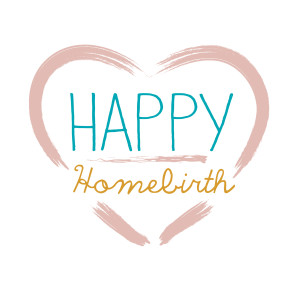Episodes

Monday Apr 01, 2019
Monday Apr 01, 2019

Thank You, Sponsors!
Hatched at Home-Midwife Carrie LaChapelle: www.hatchedathome.com
https://www.facebook.com/MidwifeCarrieLachapelleLMCPM/
864-907-6363
Stephanie Sibbio’s Glowing Mama To Be Course: www.myhappyhomebirth.com/glowingmamacourse (15% off with the code: happyhomebirth15 )
Instagram: stephsibbiofitness
Body Works Physical Therapy
http://bodyworks-physicaltherapy.com/
https://www.facebook.com/groups/MamaBodyWorks
Email: bodyworkspt.llc@gmail.comPhone: (864) 757-2440
Dreckman Family Chiropractic
http://www.familychiropracticinsimpsonvillesc.com/
864-757-9901
Show Notes:
- Carrie is a Licensed CPM working in the upstate of South Carolina
- Her first two children were born traditionally in the hospital. After the birth of her first child, she realized she loved all things related to birth. This was in 1997, so before the ease of internet access.
- She learned about becoming a doula, and decided to take a DONA Certified doula training course.
- Soon after the birth of her second child, she found an ad in a local parenting magazine for a midwife who was looking for midwifery students.
- She contacted the midwife, who invited her to dinner. This midwife explained to Carrie exactly what her job entailed, and Carrie was shocked. “People actually do that? They give birth at home? And pay you? That seems so strange to me!”
- This midwife invited Carrie to a birth, where a precious mother allowed Carrie into her birthing space. Carrie remembers vividly how amazing the experience was. “It almost like time stood still when that baby was born.” She mentions how the mother’s thoughts and feelings were taken into consideration, as was the father’s… how this was their experience and it mattered to the midwife that they were respected.
- Having only worked in the hospital previously, Carrie was overwhelmed with the beauty of this way of giving birth. At that time, in the hospital, there was no such thing as “the golden hour” or “the magic hour,” and babies were typically very quickly and unceremoniously removed from their mothers.
- Carrie explains her route to midwifery, though schooling has changed since she studied. At that time, she had do a self-study course led by a licensed midwife, complete a certain number of prenatal exams, births, and newborn exams, and once everything was satisfied, she was approved to sit for the NARM exam, which is similar to a nursing exam.
- Now, Carrie is on the other end. Not only is she a midwife, but she is a preceptor. Carrie takes on apprentices and teaches them about midwifery from top to bottom.
- “Sometimes it’s still amazing to me that I am a midwife.”
- Carrie discusses how amazing it is to be able to teach others- to watch them replay and sort out births and process how it all works is very worth it for her.
- We now compare the similarities and differences of midwifery vs. a typical ob/gyn
- Carrie shares how all of the same testing is offered: ultrasounds (whether early ultrasound, 20-week anatomy scan, 35 week weight and position scan), gestational diabetes screening, and group b strep. All of these are offered, but more options exist. Carrie also believes strongly in informed consent. A mother is given all of the information and asked to consider it and do research on her own if she feels uncertain. Should she decide to forgo certain tests, Carrie supports her clients in it, knowing that they are owning their own decisions.
- When it comes to the differences between midwifery and OB/GYN care, Carrie mentions how with midwifery, the experience tends to be much more one-on-one, without any middlemen. For example, when she experienced OB care, typically the nurse did the bulk of the work, with the doctor coming in to speak for a few minutes. With a midwife, the prenatals are 45 minutes to an hour, and flexible at that. The midwife is the one checking vitals, listening to baby, palpating the belly (feeling where baby is in the belly—moms love getting to know their baby this one and what kind of position he/she is in), and taking a urine sample.
- Carrie discusses how a large part of the prenatal is made of “teachable moments,” where nutrition is discussed, growth spurts, and information pertinent to that mom’s particular place in the pregnancy journey. She talks about how it’s somewhat astounding to her how many of her second and third time mothers who are having their first homebirth will often say, “wow, nobody ever told me that…”, which Carrie finds rather disappointing, as she feels the information she gives is all very relevant—information mothers should be given.
- “If you give them the tools they need to have a better feeling pregnancy, they’ll use them!”
- Beyond having longer prenatals, Carrie’s clients have access to her 24/7. Of course she asks that they not call her at 11pm to ask what comes in her birth kit, but she does say, “if you’re worried about something- if something is keeping you awake at night- just call me.”
- We next jump into the common misconceptions of homebirth.
- Carrie mentions how the training for midwifery is similar to being trained to work on an ambulance: midwives are trained to deal with whatever comes up in the moment.
- Medications are carried in case a mother were to have too much bleeding postpartum, midwives are required to maintain certification in neonatal resuscitation, and they carry oxygen and resuscitation equipment in the small case that they need to use it.
- Carrie mentions how with homebirth, it’s the mother’s body doing what it’s designed to do- the midwife isn’t adding anything or taking anything away by using interventions. Because of that, the chances of running into true emergencies are so much less.
- “What about the mess?!”
- “That’s what I feel like makes us birth ninjas—we have all of these little tricks”
- Carrie discusses how being a midwife does not mean that she is in any way anti-hospital. In fact, having strong relationships with local doctors, nurse midwives and OB/GYN’s is hugely important to her. Being able to groom these relationships and work with other providers to make sure that her clients are receiving exactly what they need when they need it is what her practice is all about.
- Carrie says her clients range from moms who say, “What is the greatest amount of things you can do for me” all the way to “What is the least amount I can do and get away with it”
- She mentions that each of her clients is seen by a doctor, nurse practitioner, or certified nurse midwife at least twice during her pregnancy. This is to confirm that the client is healthy and a good fit for out-of-hospital birth at the time the care practitioner sees them.
- Carrie’s recommendation for a mother who is considering homebirth: Gather a list of questions together, meet with multiple midwives, and certainly bring your spouse along—especially if he is uncertain or uncomfortable with the idea of homebirth. Often times once he meets the midwife and sees that she is a genuine medical care provider, the fears drop away.
Episode 17 Roundup:
- Midwives (CPM’s) are trained professionals who have to go through rigorous schooling and testing (and it’s getting more rigorous all the time), as well as an intense apprenticeship program. They have to maintain certification in life-saving practices such as neonatal resuscitation and CPR. They carry equipment and medications, should an emergency arise.
- A competent midwife has working relationships with local doctors, hospitals and the like. Of course, some hospitals and doctors are more friendly to homebirth families than others, but midwives do their best to maintain solid relationships and have people to call on when needed.
- Homebirth mothers are well cared for through long prenatals where not only are all of the routine tests and practices offered, but midwives take the time to discuss other pertinent parts of pregnancy, such as nutrition, that often times OB’s just don’t have the time to cover. They are also often overseen by another care provider several times throughout the pregnancy to assure that they are a good candidate for homebirth.
- If you are a mother considering homebirth, go interview midwives. Bring your questions, bring your spouse, heck bring your whole family. Find a midwife that resonates with you and who makes you feel comfortable and supported.
Version: 20241125


No comments yet. Be the first to say something!